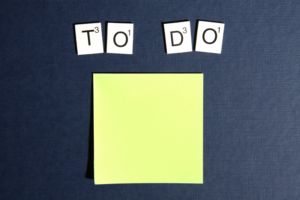
Chronic disorganization impacts someone’s life over a long period of time. It can begin as early as childhood. It impacts their quality of life every day. It can cause stress and problems at home, at work, in school, and with relationships. Items are lost and must be searched for or replaced. Time slips away and promises are forgotten. Phone calls, emails and texts go unanswered. Appointments and deadlines are missed. It feels as though you are just lurching from one crisis to the next, never able to find a schedule or routine that works. Someone dealing with chronic disorganization has generally bought several organizing books, had family & friends come in to organize them, bought supplies or furniture that is supposed to get you organized. These repeated attempts to “get it together” have failed because they are designed by people whose brains are wired for organization and not for the rest of us. Often there has been a mismatch between the way someone was taught to organize and their unique profile of learning styles and strengths. The system they were taught may be great but it just doesn’t work for them. Instead of being told to look for a different kind of system they were probably told to try harder to make that system work. This comes from the misconception that being organized is solely a factor of intelligence, maturity, and effort.  This couldn’t be farther from the truth. Working with people who are chronically disorganized is not about teaching a system but rather it’s a process of discovering their strengths and using them to design a system that works for them. Traditional Organizing systems tend to be linear and logical. Label the file with the client’s name and put them in alphabetical order and viola you are organized. What if you aren’t a linear thinker? What if you are a relationship kind of person, something that’s important for business development. Files arranged by Name in alphabetical order might not give you enough information. You might need to group things according to where the client is in the relationship process. What if you are active, the type of person who needs to move around when they are talking on the phone. You might need files that are labeled with action words for example Call, Do, Defer, Shred. What if you are motivated by external hard deadlines. “Do” might not have enough urgency to put it on your radar. You may need files which are grouped or organized by deadline using words like cold, hot, on fire and call 911. The good news is that chronic Disorganization doesn’t have to be a life sentence. There are systems and techniques that work.
This couldn’t be farther from the truth. Working with people who are chronically disorganized is not about teaching a system but rather it’s a process of discovering their strengths and using them to design a system that works for them. Traditional Organizing systems tend to be linear and logical. Label the file with the client’s name and put them in alphabetical order and viola you are organized. What if you aren’t a linear thinker? What if you are a relationship kind of person, something that’s important for business development. Files arranged by Name in alphabetical order might not give you enough information. You might need to group things according to where the client is in the relationship process. What if you are active, the type of person who needs to move around when they are talking on the phone. You might need files that are labeled with action words for example Call, Do, Defer, Shred. What if you are motivated by external hard deadlines. “Do” might not have enough urgency to put it on your radar. You may need files which are grouped or organized by deadline using words like cold, hot, on fire and call 911. The good news is that chronic Disorganization doesn’t have to be a life sentence. There are systems and techniques that work.
 There are many different factors that have been associated with chronic disorganization. Some factors might seem obvious for example:
There are many different factors that have been associated with chronic disorganization. Some factors might seem obvious for example:
- having too much stuff
- not having enough time because of overscheduling
- difficulty making decisions
- perfectionism
- emotional attachment to possessions
- being a big picture person who has difficulty breaking things down into small details
- being detail oriented and have difficulty seeing the big picture.
Some Learning Differences, Neurobiological or Physical conditions can also lead to chronic disorganization by causing someone to have trouble designing and maintaining organizational systems:
- Visual processing differences
- Auditory processing differences
- Sensory processing differences
- Depression
- Anxiety
- ADHD
- Autism
- PTSD
- Auto-immune diseases
